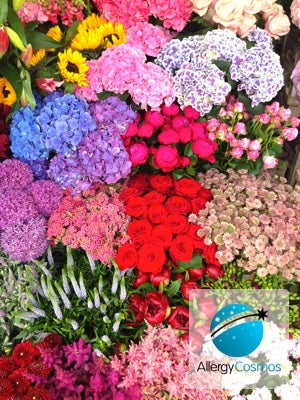If your pollen allergy, hay fever or asthma is triggered by pollen, you might be only too familiar with the pollen seasonal cycles. If you’re not, and you are asking yourself what pollen season are we in, here’s how the pollen season tends to go:
- Tree pollen (oak, willow, birch, sycamore) is around from late winter to early summer
- Grass (rye, oat, foxtail) pollen peaks in the summer
- Then you get weed pollen (nettle, dock) peaking in August
- In the autumn, it is the turn of fungal spores
- And as winter sets in, you finally get some relief!
Some people experience allergy symptoms all year round (such as pet allergies or dust mite allergies for example), might not be affected by being exposed to a high pollen count. However, most people who suffer with asthma or allergies react to more than one trigger and will experience the typical allergy and asthma symptoms. Time of day when you are exposed to pollen can be important - for instance, grass emits pollen from early morning, while birch starts emitting pollen only at noon. Your symptoms toward pollen may be especially strong late in the day. The reason is a pollen shower, which is pollen descending in the evening as the air it is borne upon cools and sinks.
Pollen comes from the male part of a plant and consists of microscopic grains (typically 10 to 40 microns diameter, but some plants produce light pollen dust whose grains are less than five microns wide). It is the wind-pollinated plants, like the grasses, which have small, inconspicuous flowers, that are responsible for most allergies. Having said that, some people are also allergic to the pollen of cut flowers, like lilies, which are insect-pollinated. Pollen is just like dust - millions of grains travel through the air and get into the mouth, nose, and lungs.
You can protect yourself in several simple ways. For instance:
- Wear sunglasses, especially the wrap-around kind
- Try a dab of Vaseline inside your nostrils - it will trap pollen grains
- A good air purifier will remove pollen grains from indoor spaces
- Dry your laundry indoors
- Remove stamens from cut flowers if you are allergic to, say, lily pollen
- Fit air conditioning in your car so you don’t have to get stifling hot driving with the windows closed to keep pollen out
- Stay indoors when pollen counts are high or, if you can’t, change your clothes as soon as you get home to get rid of pollen clinging to them
- Use allergy and asthma friendly cleaning products, they will eliminate the pollen on contact
What pollen season are we in and how high is the pollen count?
The pollen count is the number of pollen grains in a given volume of air over a 24 hour period. A pollen count of 50 or less is considered low, and a count of 1000 or more is high. People do vary, however, in how sensitive they are to pollen. One person’s ‘low’ may be someone else’s ‘high’. The pollen forecast, like the weather forecast, depends upon temperature, the time of year, and humidity.
A report out in the Proceedings of the National Academy of Sciences gives some indication of how climate change may affect the pollen season. Researchers at the United States Department of Agriculture used 15 years of pollen data to conclude that the ragweed season has lengthened by 16 days in North Dakota and Minnesota and by 27 days in Canada. Ragweed produces one of the most potent pollen allergens. The same team also noted that ragweed in New York was producing five times more pollen than in rural areas. Ragweed is native to North America but has spread to hotter parts of Europe, like Eastern France. Ragweed has not been an important allergen in the United Kingdom because our climate is too cool and damp for plant populations to become established. You do sometimes see ragweed on waste ground, rubbish tips, and in gardens and allotments - but it does not come back year after year. That may change, as our climate becomes hotter. Climate change could also cause the birch pollen season to start and end earlier, while the grass pollen season may start earlier (each degree rise in temperature could bring the season forward by a couple of weeks).




